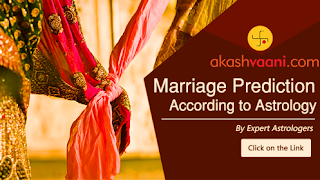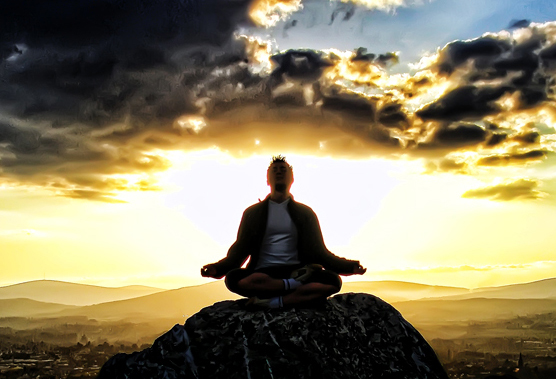Scientific meaning of Marriage rituals that are followed during North Indian Marriage.
India being a vast country, the marriage rituals vary in different states. If we look at a typical North Indian Marriage, it will be totally different from that in the South but all Indian marriages are celebrated with traditions and lots of fun.
- Engagement ceremony The engagement is usually exchange of rings by the bride and groom. It is a sort of official announcement of the couple to close relatives and friends who are invite to the ceremony.
- Muhurta This is a ceremony when the auspicious date and time for the wedding is fixed. It is known as the Muhurta. The astrologers use the date and time of birth of the bride and groom to calculate the position of planets and stars to get a right time so the union of the bride and groom will be a happy one. At the time of this ceremony, the gautra of both the bride and groom is announced. A gautra is the ancestral lineage or original clan (this is not related to caste or religion). In Hindu law, marriages do not take place within the same clan.
- Sangeet This is a pre-party before the actual wedding known as the Sangeet where the family comes together to sing, dance and revel in joy at the upcoming union of the couple. Family members even have dance performances! The bride's family would sing traditional folk songs to welcome the groom's family. The sangeet, means "sung together," is conducted a few days before the mehendi ceremony that starts off all the wedding functions. Earlier sangeet ceremonies were only the part of North Indian Hindu Marriage ceremonies, now this fun event has made its presence felt even in South India.
- Mehendi The Mehendi ceremony takes place in the evening a day prior to the wedding as application of Mehendi takes a long time with lot of dance and music by family members and friends. At this ceremony, intricate designs made of henna are applied to the bride’s hands and feet. Even other females in the family have mehendi done on their hands.
- Haldi During this ceremony a paste of haldi is applied on the bride and the groom's body before their wedding day after the mehendi ceremony. Haldi ceremony is directly connected with beautifying the bride and the groom as it brings a glow to their body and is said to ward off the evil eye.
- Ganesh Pujan On the day of the marriage, the main ceremony starts with ablutions to Lord Ganesha, the god of beginnings and good fortune and the remover of obstacles. Salutations are offered so that Ganesha may pave the way for the couple's happy married life and any obstacles of any are removed
- Homam The wedding mandap or a pandal is a temporary structure erected for the purpose of the marriage ceremony. It would usually appear on an elevated platform, and is decorated with flowers and greenery to fabric and crystals. A fire is kindled in the center of the mandap, or wedding altar. A North Indian Hindu marriage is a sacrament, not a contract. A fire is kept as a witness and offerings are made to signify the viability of the ceremony. The bride's brother has to give three fistfuls of puffed rice to the bride as a wish for his sister's happy marriage to offer this rice to the fire. This offering is known as a homam.
- Exchange of Garlands In North Indian marriages, this is the part of the main ceremony during which the bride and groom exchange floral garlands. It is a way to express the desire of the couple to get married to each other.
- Kanyadaan This is a ceremony where the bride’s father gives away his daughter to the in laws and this is known an Kanyadaan. The bride’s father places the daughter’s hands in the hands of the groom as a gesture.
- Saptapadi This is another important ritual in North Indian Hindu marriages. The garments of the bride and groom are tied together in knots and asked to make seven circles around the holy fire; each round signifies a special blessing that they request from God. The significance of this ritual is to establish friendship or compatibility between the couple which is the basis of marriage.
- Sindoor Sindoor which is a red-orange powder is applied in the parting of the woman's hair, as a symbol of her new status as a married woman.
- Mangal Sutra In this ceremony of a North Indian Marriage, the groom ties a necklace of black and gold beads around the bride’s neck. Traditionally, it means that Goddess Lakshmi the Hindu goddess of wealth, fortune and prosperity, is invoked in the mangala sutra and the bride is said to receive her blessings throughout her marriage.
- Vidaai It is an emotional event that announces the completion of the wedding. It is an integral ritual of wedding, where the bride with teary eyes steps out of the doors and throws back five handfuls of rice over her head reflecting wealth and prosperity. This ritual is significant that the bride has paid back whatever her parents have given her all these years. As she departs in a car, bride's brothers and cousins push the car, which is symbolic that the brothers are helping her start a new life with her husband. Once the car starts, money is thrown on the road to ward off any effects of the evil spirits.
- Dwar Rokai ceremony - This is a fun ceremony mostly seen in North Indian Marriages. Dwar Rokai ceremony is held when newly married couple arrives at groom's residence and his sister confronts the couple by not letting the couple enter the house. The brother is asked to present her with cash or precious gifts in order to gain entrance in the house.
- Griha Pravesh ceremony The Griha Pravesh Ceremony takes place after the Dwar Rokai ceremony. In this ceremony, a traditional welcome is given to the new bride by asking her to first push a kalash filled with rice with her right toe before entering the house. This ceremony is significant that the groom’s family has not only welcomed the bride into their house but has also accepted her as one of the integral members of their family.
- Mooh Dikhai Ceremony It is usually held to introduce the new bride to the family of the groom. The face of the bride is unveiled and showered with gifts. To welcome the bride, the mother in law offers gifts to the bride.
- Pag Phera Ceremony In this ceremony, the bride is taken back to her parental home by her brothers for three days. After three days, her husband comes to her house and asks for blessings from her parents to take her back home. The bride’s family offers gifts to the daughter and son in law. This North Indian Marriage custom signifies that the girls who are supposed to be Goddess Lakshmi go back to her parents’ home to ensure their prosperity.
Thus, ends the elaborate ceremony of a North Indian Marriage. For more details, you can ask our expert astrologers.






Comments